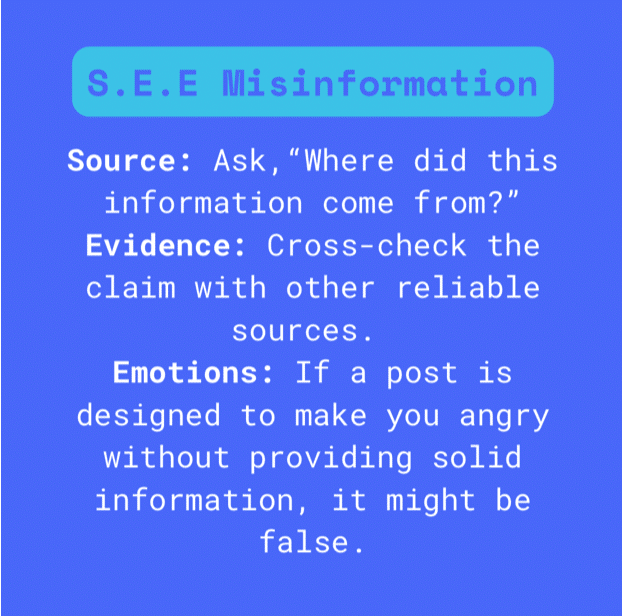Misinformation and Disinformation
Fact or Fiction? : Misinformation in the Digital Age
Misinformation can spread quickly. With this short quiz, you can learn to identify misinformation quickly and effectively.

Misinformation is common on social media. Whether it’s about politics, mysterious diseases, or health concerns, these false claims often go viral before being checked for accuracy.
While we may think we’re skilled at spotting misleading info, our tendency to believe others’ claims can lead us astray. This short quiz will teach you to see the truth by focusing on the Source, Evidence, and Emotions surrounding any information.
Before You Begin: Remember to S.E.E.
Source. Evidence. Emotions.
Source: Ask, “Where did this information come from?”
Trustworthy sources like news, educational sites, or experts are usually reliable. If the source is obscure or unverifiable, be cautious.
Evidence: Cross-check the claim with other reliable sources.
If only one source supports it, it’s likely not well-verified.
Emotions: Misinformation often triggers strong emotions, such as fear or outrage.
If a post is designed to make you angry without providing solid information, it might be false.
Quiz Time!
Put your knowledge to the test with the following claims. Decide if each one is fact or fiction.
Scroll carefully—the answer will follow each question!
With these tools, you’re better prepared to navigate the digital information landscape and spot misleading information before it spreads.

Author: Briara D.
2024-2025 Youth Innovation Council Member
Need to talk?
Text NOFILTR to 741741 for immediate assistance.

